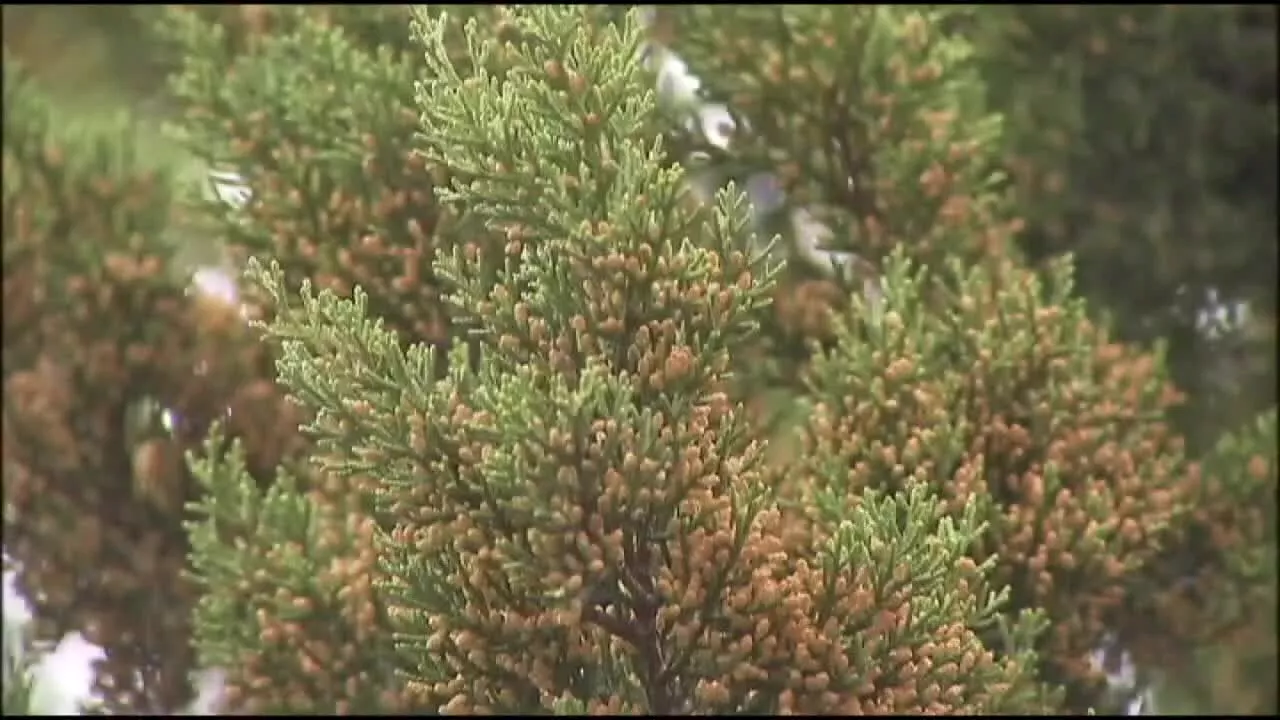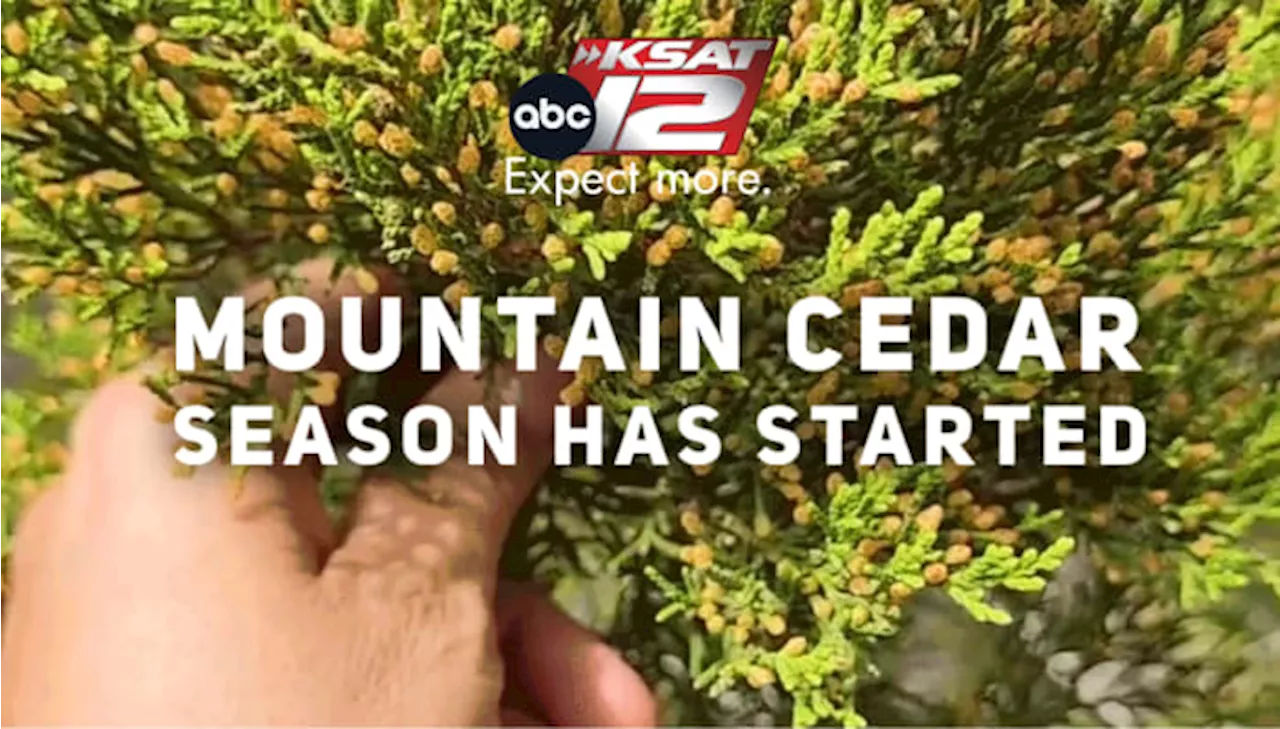As the weather turns colder in Texas, so too does the arrival of cedar fever season. This time of year brings a wave of allergic reactions as pollen from mountain cedar trees floods the air.
Many Texans in December have their own take on the classic Christmas song, “It’s the Most Wonderful Time of the Year.” This version would go: “It’s the most wonderful time of the year.
With sniffling and sneezing, and coughs during meetings, find the doctor on call, it’s the most wonderful time of all!” Welcome to cedar fever season, the time of the year when pollen from mountain cedar or Ashe juniper trees, scientifically known as Juniperus ashei, invades our sinuses and triggers allergic reactions. The Texas Parks and Wildlife Department states that the Edwards Plateau is covered with about 24 million acres of these trees. They are distributed across a wide area of Texas, stretching from the Red River to the Rio Grande, and this includes the Hill Country, west of Interstate 35, where primarily juniper trees mix with live oak trees. These trees typically begin producing pollen in mid-December, and this is triggered by chilly weather. When a cold front moves into the region, the air pressure drops, humidity is reduced, and the pollen cones on the tree open. The gusty winds behind the cold front pick up the fine, lightweight pollen, causing it to float and travel for miles, far away from the source. That’s why cedar can affect many folks throughout Texas who are not near a high concentration of juniper trees. “Cedar fever is irritating to many due to the quantity and density of Ashe junipers in Central Texas that all produce pollen at the same time, which leads to a high concentration of pollen in the air,” said Robert Edmonson, Texas A&M Forest Service biologist and ISA-certified arborist. If you’re new to Texas or unfamiliar with “cedar fever,” it can be confusing because it coincides with the peak of cold and flu season. Cedar fever symptoms, such as fatigue, sore throat, runny nose, itchy eyes, partial loss of smell and a slight increase in body temperature, closely resemble those of a cold. However, if your fever exceeds 101 degrees Fahrenheit, it’s best to consult with a doctor to rule out other illnesses
CEDAR FEVER ALLERGY TEXAS MOUNTAIN CEDAR POLLEN
United States Latest News, United States Headlines
Similar News:You can also read news stories similar to this one that we have collected from other news sources.
 Cedar Fever Season Peaks in TexasThe Lone Star State is bracing for a strong cedar fever season, with symptoms hitting early this year. Dr. Ronald Cox explains the unique nature of this allergy and offers tips for relief.
Cedar Fever Season Peaks in TexasThe Lone Star State is bracing for a strong cedar fever season, with symptoms hitting early this year. Dr. Ronald Cox explains the unique nature of this allergy and offers tips for relief.
Read more »
 Texans brace for mountain cedar fever in upcoming winter monthsThreat of mountain cedar fever increases with incoming winter, cold fronts, induces cold and flu symptoms, higher threat in Hill County
Texans brace for mountain cedar fever in upcoming winter monthsThreat of mountain cedar fever increases with incoming winter, cold fronts, induces cold and flu symptoms, higher threat in Hill County
Read more »
 Texas Handles Rival Texas A&M to Make SEC Championship in First SeasonThe Longhorns made changing conferences look easy with dominant, physical win after 13-year wait in the series and all but locked up a College Football Playoff berth.
Texas Handles Rival Texas A&M to Make SEC Championship in First SeasonThe Longhorns made changing conferences look easy with dominant, physical win after 13-year wait in the series and all but locked up a College Football Playoff berth.
Read more »
 Texas Longhorns Final Regular Season Test vs. Texas A&M Aggies Could Be Toughest YetThe Texas Longhorns are now one win away from competing for an SEC Championship.
Texas Longhorns Final Regular Season Test vs. Texas A&M Aggies Could Be Toughest YetThe Texas Longhorns are now one win away from competing for an SEC Championship.
Read more »
 IT’S OFFICIAL: Mountain Cedar season kicks off in San Antonio 🤧Cedar season lasts through mid-February, peaking in mid-January
IT’S OFFICIAL: Mountain Cedar season kicks off in San Antonio 🤧Cedar season lasts through mid-February, peaking in mid-January
Read more »
 Texas A&M vs. Texas, Vanderbilt vs. Tennessee predictions: College football odds, picksTexas A&M will be the best defense Texas has faced all season.
Texas A&M vs. Texas, Vanderbilt vs. Tennessee predictions: College football odds, picksTexas A&M will be the best defense Texas has faced all season.
Read more »